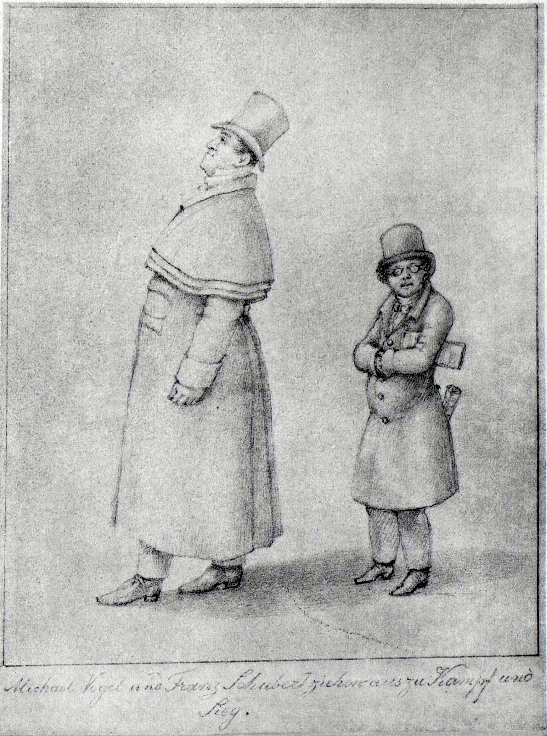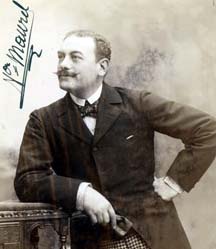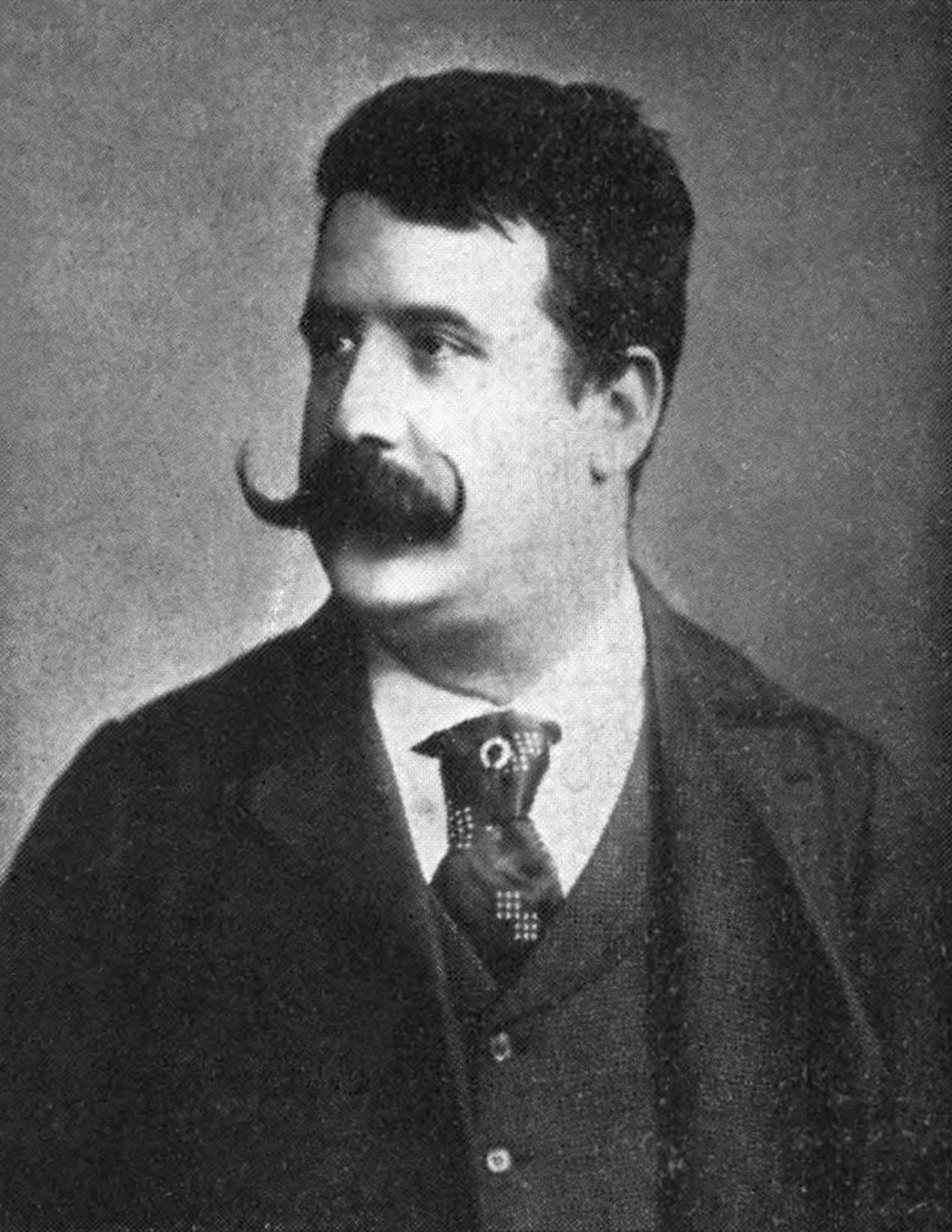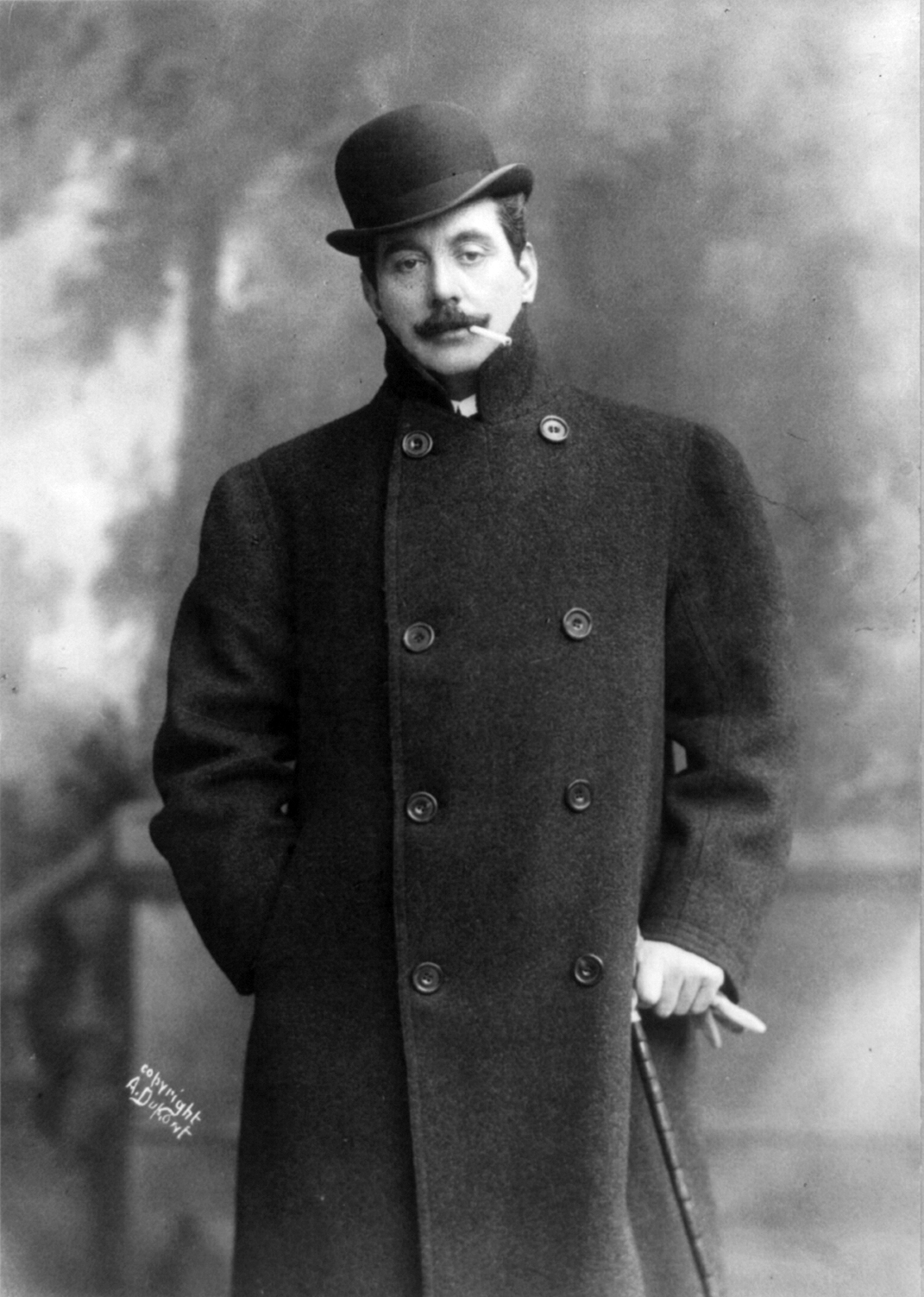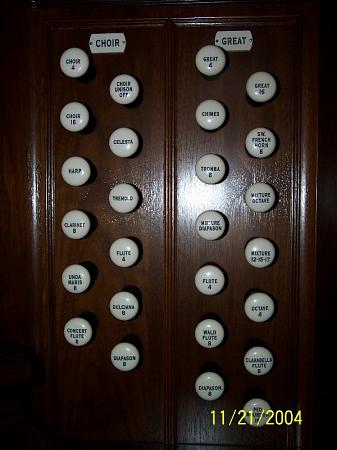|
Arturo Toscanini
Arturo Toscanini (; ; March 25, 1867January 16, 1957) was an Italian conductor. He was one of the most acclaimed and influential musicians of the late 19th and early 20th century, renowned for his intensity, his perfectionism, his ear for orchestral detail and sonority, and his eidetic memory. He was at various times the music director of La Scala in Milan and the New York Philharmonic. Later in his career, he was appointed the first music director of the NBC Symphony Orchestra (1937–1954), and this led to his becoming a household name, especially in the United States, through his radio and television broadcasts and many recordings of the operatic and symphonic repertoire. Biography Early years Toscanini was born in Parma, Emilia-Romagna, His father was a tailor. He won a scholarship to the Parma Conservatory, where he studied the cello. Living conditions at the conservatory were harsh and strict. For example, the menu at the conservatory consisted almost entirely of fish; in ... [...More Info...] [...Related Items...] OR: [Wikipedia] [Google] [Baidu] |
Parma
Parma (; ) is a city in the northern Italian region of Emilia-Romagna known for its architecture, Giuseppe Verdi, music, art, prosciutto (ham), Parmesan, cheese and surrounding countryside. With a population of 198,986 inhabitants as of 2025, Parma is the second most populous city in Emilia-Romagna after Bologna, the region's capital. The city is home to the University of Parma, one of the oldest universities in the world. Parma is divided into two parts by the Parma (river), stream of the same name. The district on the west side of the river is ''Oltretorrente'', meaning ''The other side of the stream''. Parma's Etruscan name was adapted by Romans to describe the round shield called ''Parma (shield), Parma''. History Prehistory Parma was already a built-up area in the Bronze Age. In the current position of the city rose a Terramare culture, terramare. The "terramare" (marl earth) were ancient villages built of wood on piles according to a defined scheme and squared form; c ... [...More Info...] [...Related Items...] OR: [Wikipedia] [Google] [Baidu] |
La Wally
''La Wally'' is an opera in four acts by composer Alfredo Catalani, to a libretto by Luigi Illica, first performed at La Scala, Milan, on 20 January 1892. It was Catalani's last opera. The libretto is based on a hugely successful ' by Wilhelmine von Hillern (1836–1916), '' The Vulture Maiden'' (''Die Geier-Wally''). Wally, short for Walburga, is a girl with some heroic attributes. The story is based on an episode in the life of Tyrolean painter Anna Stainer-Knittel, whom von Hillern met. She got her epithet "Geier" (vulture, the local name for eagle) from having gutted a bearded vulture's nest going down a rope; this dangerous task, aimed at protecting the sheep in the Alpine village, was typically performed by a man. Hillern's piece was originally serialized in '' Deutsche Rundschau'' and was reproduced in English as "A German Peasant Romance" [...More Info...] [...Related Items...] OR: [Wikipedia] [Google] [Baidu] |
Richard Wagner
Wilhelm Richard Wagner ( ; ; 22 May 181313 February 1883) was a German composer, theatre director, essayist, and conductor who is chiefly known for his operas (or, as some of his mature works were later known, "music dramas"). Unlike most opera composers, Wagner wrote both the libretto and the music for each of his stage works. Initially establishing his reputation as a composer of works in the romantic vein of Carl Maria von Weber and Giacomo Meyerbeer, Wagner revolutionised opera through his concept of the ''Gesamtkunstwerk'' ("total work of art"), whereby he sought to synthesise the poetic, visual, musical and dramatic arts, with music subsidiary to drama. The drama was to be presented as a continuously sung narrative, without conventional operatic structures like Aria, arias and Recitative, recitatives. He described this vision in a List of prose works by Richard Wagner, series of essays published between 1849 and 1852. Wagner realised these ideas most fully in the first ... [...More Info...] [...Related Items...] OR: [Wikipedia] [Google] [Baidu] |
Pyotr Ilyich Tchaikovsky
Pyotr Ilyich Tchaikovsky ( ; 7 May 1840 – 6 November 1893) was a Russian composer during the Romantic period. He was the first Russian composer whose music made a lasting impression internationally. Tchaikovsky wrote some of the most popular concert and theatrical music in the classical repertoire, including the ballets '' Swan Lake'' and ''The Nutcracker'', the '' 1812 Overture'', his First Piano Concerto, Violin Concerto, the ''Romeo and Juliet'' Overture-Fantasy, several symphonies, and the opera ''Eugene Onegin''. Although musically precocious, Tchaikovsky was educated for a career as a civil servant as there was little opportunity for a musical career in Russia at the time and no public music education system. When an opportunity for such an education arose, he entered the nascent Saint Petersburg Conservatory, from which he graduated in 1865. The formal Western-oriented teaching Tchaikovsky received there set him apart from composers of the contemporary nationalist ... [...More Info...] [...Related Items...] OR: [Wikipedia] [Google] [Baidu] |
Johannes Brahms
Johannes Brahms (; ; 7 May 1833 – 3 April 1897) was a German composer, virtuoso pianist, and conductor of the mid-Romantic period (music), Romantic period. His music is noted for its rhythmic vitality and freer treatment of dissonance, often set within studied yet expressive contrapuntal textures. He adapted the traditional structures and techniques of a wide historical range of earlier composers. His includes four symphony, symphonies, four concertos, a Requiem, much chamber music, and hundreds of folk-song arrangements and , among other works for symphony orchestra, piano, organ, and choir. Born to a musical family in Hamburg, Brahms began composing and concertizing locally in his youth. He toured Central Europe as a pianist in his adulthood, premiering many of his own works and meeting Franz Liszt in Weimar. Brahms worked with Ede Reményi and Joseph Joachim, seeking Robert Schumann's approval through the latter. He gained both Robert and Clara Schumann's strong support ... [...More Info...] [...Related Items...] OR: [Wikipedia] [Google] [Baidu] |
Franz Schubert
Franz Peter Schubert (; ; 31 January 179719 November 1828) was an Austrian composer of the late Classical period (music), Classical and early Romantic music, Romantic eras. Despite his short life, Schubert left behind a List of compositions by Franz Schubert, vast ''oeuvre'', including more than 600 ''Lieder'' (art songs in German) and other vocal works, seven complete symphonies, sacred music, operas, incidental music, and a large body of piano and chamber music. His major works include "Erlkönig (Schubert), Erlkönig", "Gretchen am Spinnrade", and "Ave Maria (Schubert), Ave Maria"; the Trout Quintet, ''Trout'' Quintet; the Symphony No. 8 (Schubert), Symphony No. 8 in B minor (''Unfinished''); the Symphony No. 9 (Schubert), Symphony No. 9 in C major (''Great''); the String Quartet No. 14 (Schubert), String Quartet No. 14 in D minor (''Death and the Maiden''); the String Quintet (Schubert), String Quintet in C major; the Impromptus (Schubert), Impromptus for solo piano; the S ... [...More Info...] [...Related Items...] OR: [Wikipedia] [Google] [Baidu] |
Pagliacci
''Pagliacci'' (; literal translation, 'Clowns') is an Italian opera in a prologue and two acts, with music and libretto by Ruggero Leoncavallo. The opera tells the tale of Canio, actor and leader of a commedia dell'arte theatrical company, who murders his wife Nedda and her lover Silvio on stage during a performance. ''Pagliacci'' premiered at the Teatro Dal Verme in Milan on 21 May 1892, conducted by Arturo Toscanini, with Adelina Stehle as Nedda, Fiorello Giraud as Canio, Victor Maurel as Tonio, and Mario Ancona as Silvio. Soon after its Italian premiere, the opera played in London (with Nellie Melba as Nedda) and in New York (on 15 June 1893, with Agostino Montegriffo as Canio). ''Pagliacci'' is the best-known of Leoncavallo's ten operas and remains a staple of the repertoire. ''Pagliacci'' is often staged with ''Cavalleria rusticana'' by Pietro Mascagni, a double bill known colloquially as "Cav/Pag". Origin and disputes Leoncavallo was a little-known composer when Pietro Masc ... [...More Info...] [...Related Items...] OR: [Wikipedia] [Google] [Baidu] |
Ruggero Leoncavallo
Ruggero (or Ruggiero) Leoncavallo (23 April 18579 August 1919) was an Italian opera composer and librettist. Throughout his career, Leoncavallo produced numerous operas and songs but it is his 1892 opera ''Pagliacci'' that remained his lasting contribution, despite attempts to escape the shadow of his greatest success. Today ''Pagliacci'' continues to be his most famous opera and one of the most popular and frequently performed works in the operatic repertory. His other notable compositions include the song " Mattinata", popularized by Enrico Caruso, and, to a lesser extent, his version of ''La bohème'' which, however, was overshadowed by Puccini's highly successful opera of the same name. Biography The son of Vincenzo Leoncavallo, a police magistrate and judge, Leoncavallo was born in Naples, Kingdom of the Two Sicilies, on 23 April 1857. As a child, Leoncavallo moved with his father to the town of Montalto Uffugo in Calabria, where he lived during his adolescence. In 1868 ... [...More Info...] [...Related Items...] OR: [Wikipedia] [Google] [Baidu] |
La Bohème
''La bohème'' ( , ) is an opera in four acts,Puccini called the divisions '':wikt:quadro, quadri'', ''wikt:tableau, tableaux'' or "images", rather than ''atti'' (acts). composed by Giacomo Puccini between 1893 and 1895 to an Italian libretto by Luigi Illica and Giuseppe Giacosa, based on ''La Vie de Bohème, Scènes de la vie de bohème'' (1851) by Henri Murger. The story is set in Paris around 1830 and shows the Bohemianism, Bohemian lifestyle (known in French as "") of a poor seamstress and her artist friends. The world premiere of ''La bohème'' was in Turin on 1 February 1896 at the Teatro Regio (Turin), Teatro Regio, conducted by the 28-year-old Arturo Toscanini. Since then, ''La bohème'' has become part of the standard Italian opera repertory and is one of the most frequently performed operas worldwide. In 1946, 50 years after the opera's premiere, Toscanini conducted a commemorative performance of it on radio with the NBC Symphony Orchestra. A recording of the performa ... [...More Info...] [...Related Items...] OR: [Wikipedia] [Google] [Baidu] |
Giacomo Puccini
Giacomo Puccini (22 December 1858 29 November 1924) was an Italian composer known primarily for List of compositions by Giacomo Puccini#Operas, his operas. Regarded as the greatest and most successful proponent of Italian opera after Verdi, he was descended from a long line of composers, stemming from the late Baroque music, Baroque era. Though his early work was firmly rooted in traditional late-nineteenth-century Romantic Italian opera, it later developed in the realistic ''verismo'' style, of which he became one of the leading exponents. His most renowned works are ''La bohème'' (1896), ''Tosca'' (1900), ''Madama Butterfly'' (1904), and the unfinished ''Turandot'' (posthumously completed by Franco Alfano), all of which are among the most List of important operas, frequently performed and recorded in the entirety of the operatic repertoire. Family and education Born in Lucca in the Grand Duchy of Tuscany, in 1858; he was the sixth of nine children of Michele Puccini (1813� ... [...More Info...] [...Related Items...] OR: [Wikipedia] [Google] [Baidu] |
Allargando
A variety of musical terms is encountered in printed scores, music reviews, and program notes. Most of the terms are Italian, in accordance with the Italian origins of many European musical conventions. Sometimes, the special musical meanings of these phrases differ from the original or current Italian meanings. Most of the other terms are taken from French and German, indicated by ''Fr.'' and ''Ger.'', respectively. Unless specified, the terms are Italian or English. The list can never be complete: some terms are common, and others are used only occasionally, and new ones are coined from time to time. Some composers prefer terms from their own language rather than the standard terms listed here. 0–9 ; 1 : "sifflet" or one foot organ stop ; I : usually for orchestral string instruments, used to indicate that the player should play the passage on the highest-pitched, thinnest string ; : Tierce organ stop ; 2 : two feet – pipe organ indication; see ; : pipe organ s ... [...More Info...] [...Related Items...] OR: [Wikipedia] [Google] [Baidu] |






